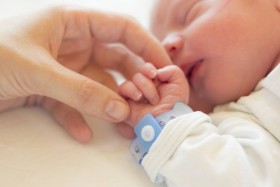Common Treatment Options for Birth Injuries

When an infant is injured during or shortly after delivery, it’s very important for treatment begin as quickly as possible. Every birth injury is unique and the type of treatment a child will need depends on the exact type of injury and how severe the injury is. However, there are many types of treatments that are widely used to treat birth injuries.
Physical Therapy
Physical therapy can be very beneficial for infants and children who have been impacted by many different types of birth injuries, including Erb’s palsy, other types of brachial plexus injuries, torticollis, cerebral palsy, and other types of injuries that involve muscle or nerve damage.
Through physical therapy, a therapist will work with a child to do things like build muscle strength, restore joint mobility, improve balance and coordination, and more. In some cases, physical therapy may be able to completely eliminate problems caused by a birth injury. But even if physical therapy isn’t able to entirely solve a problem, it may still help a child live more comfortably, whether it’s by reducing pain or helping them work through issues so they can better perform simple day-to-day things like eating, playing, or walking.
Occupational Therapy
Occupational therapy is similar to physical therapy, but is more focused on improving fine motor skills, cognitive abilities, and sensory processing. Since many types of birth injuries impact a child’s muscles and nerves, the child might have a difficult time building age-appropriate fine motor skills like holding a bottle or building hand-eye coordination. In that situation, an occupational therapist can work with a child to help them build those kinds of fine motor skills that will help make it easier for them to live independently and feel more confident. If a birth injury has impacted a child’s cognitive abilities, occupational therapy can help them learn how to do things like cope with learning disabilities, develop social skills, and learn how to handle basic, day-to-day things like grooming.
Therapeutic Hypothermia
For children who develop hypoxic-ischemic encephalopathy (HIE) after experiencing a lack of oxygen during or shortly after delivery, therapeutic hypothermia can be used to help reduce damage to the brain. During therapeutic hypothermia, an infant’s body is cooled for 72 hours, which slows the infant’s metabolic rate so that brain cells have a better chance to recover and damage is prevented from extending to other areas of the brain. For therapeutic hypothermia to be most effective, it needs to be administered very quickly after birth, within a matter of hours.
Surgery
While many types of birth injuries can be treated without the need for surgery, it may be necessary for more severe types of birth injuries. Brachial plexus injuries, for example, might require surgery if nerves are either partially or completely torn. Head or brain trauma are other types of injuries that might need surgical treatment. In some cases of cerebral palsy, undergoing selective dorsal rhizotomy (SDR) may be able to help improve mobility.
Even though there are so many different ways to treat birth injuries, every parent of an injured child would prefer that the injury had never occurred in the first place. Although some birth injuries are impossible to avoid, the sad reality is that many of them are the result of simple negligence. If your child was injured around the time of birth, it’s important to talk to a birth trauma lawyer as soon as possible to find out what your options are. Even if your child is a few years old, you may still have options. At Goodwin & Scieszka, we have lawyers who are experienced in handling birth trauma cases. Contact us today to start getting answers to questions about your case.






